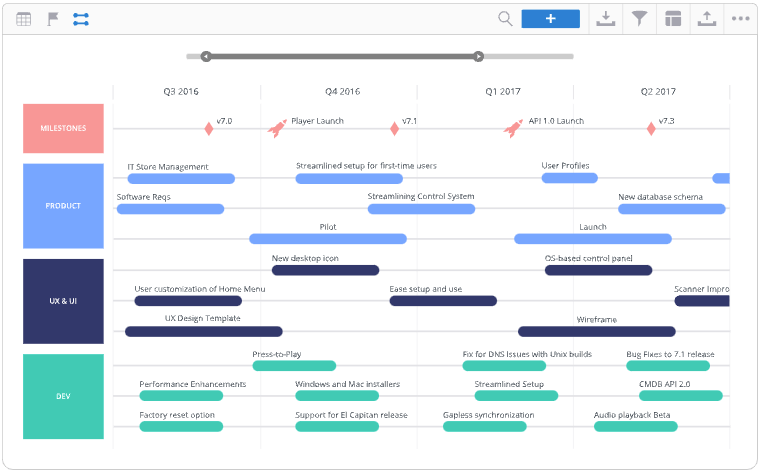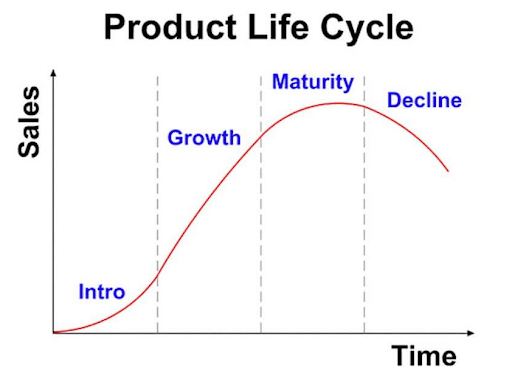Product Planning for a Successful Product Launch
Product planning, also known as product discovery, is an iterative process that helps product teams outline what needs to happen to take a product from conception to launch. With a solid roadmap in place, all members of the product team will stay aligned on their goals. Learn more about the product planning process here.
Need help selecting a company?
Based on your budget, timeline, and specifications we can help you build a shortlist of companies that perfectly matches your project needs. Get started by submitting your project details.
What is Product Planning?
Product planning is the process of outlining the necessary steps and features needed to take a new product from conception to launch. This includes conducting market research, identifying necessary features, pinpointing a price, determining how to promote it, and more.
As such, a product plan acts as a single source of truth for the team and can be used to communicate their design, development, and launching strategy.
While a product team may go into a project with a goal, a product plan explains how they will achieve it. It informs decisions later on in the product development process as well.
A product plan includes:
- Timelines with milestones
- Budgets
- Resources
- Tasks
Product managers are responsible for creating the product plan and will organize items such as how tasks will be allocated, what features need to be included, who is responsible for what, and communicating their plan with the rest of the team.
For example, many product managers will use product planning tools to create a timeline of when certain tasks will be completed.
In this product roadmap, users can also see which teams are responsible for each task.
With UX/UI designers, developers, engineers, product managers, marketing teams, sales teams, and customer service reps working on any given project, communicating the product plan is an essential part of rolling out a project smoothly.
Looking for a product designer? Search on Top Design Firms to find the perfect partner for your project.
Why is Product Planning Important?
A product plan guides the design and development process. With a solid roadmap in place, product teams are able to deliver a solution that addresses the primary goals of the project in a timely manner.
A great product plan includes scheduling and work management strategies that make it easier to deliver a product on time. It also helps the development team stick to a budget, keeping costs low.
When a product is well-planned, design and development teams are able to utilize their resources more effectively, helping them avoid waste.
Additionally, by meeting customer needs, companies are able to build a better brand image.
Product Planning Templates
Need help creating a product plan? Check out these product plan templates and roadmapping tools:
The Product Planning Process
- Concept development
- Competitive analysis
- Market research
- MVP development
- Product launch
- Product life cycle
- Sunset
Concept Development
In the concept development stage, business leaders come up with their initial idea for the product. Often, this stems from pain points consumers have or is determined based on what is missing in the market.
Also known as the discovery phase, the product team will conduct research to understand consumer needs. With an idea in hand, the team can do some quick research to validate the concept.
Once they know the problem they’re trying to solve, they can start sketching potential solutions. At this stage, the design is usually very rough, but is still a visual tool to help convey different ideas. With additional research, businesses are able to solidify the design through several iterations.
Competitive Analysis
Know matter how great an idea is, there is a good chance that someone else has thought of it before. Competitive analysis is a business strategy that relies on research to gain insight into how other companies are trying to solve a given problem.
By identifying the strengths and weaknesses of their competitors, businesses are able to find a gap in the market they can fill. This can help them identify their product’s value proposition and how they can differentiate themselves in the market.
What their competitors do well also helps product teams determine what should be included in the product design.
Consequently, the results of a competitive analysis can inform the business’s strategy. With a firm understanding of the competitive landscape, product teams can determine what features to include in a new product, how to market it, or anything else related to the launch.
How To Do A Competitive Analysis
- Determine who your competitors are
- Determine what products your competitors offer
- Review pricing models
- Analyze marketing strategies
- Track engagement with a competitor’s content
- Go through social media and other consumer-facing platforms
- Perform a SWOT analysis to learn strengths, weaknesses, opportunities, and threats
Additional reading, ‘What is Competitive Analysis & How Do You Conduct One?’
Market Research
Market research provides essential information about consumers. With proper research, businesses can gain a more accurate view of the industry. Both quantitative and qualitative market research can help design teams validate their product and challenge their assumptions.
Surveys, for example, provide valuable data that can help teams understand market trends and determine how to prioritize certain features.
Interviews and focus groups, on the other hand, provide qualitative data that helps product teams understand “why” behind consumer behavior.
Need help with market research? Find a leading market research company on Top Design Firms.
MVP Development
A minimum viable product (MVP) is an early version of a product that includes just enough features to operate. This helps product design teams validate their ideas early on in the development process and test how it will be received by early adopters.
Many product teams will launch the MVP in order to gather insight into how customers will receive it. This strategy helps the team save money because they can roll out the product without committing a large budget.
Benefits of Building an MVP
- Saves money
- Doesn’t require as many resources
- Faster development time
- Prevent waste
- Functionality provides more value to customers
With additional data, product design teams can then create new iterations that improve the final product.
This is a key idea in lean and agile development methodologies, which focuses on producing high-quality work with less waste.
Additional reading, ‘7 Principles of Lean Software Development.’
Product Launch
After building an MVP, companies need to create a product launch plan. A product launch plan outlines everything that is needed to get the product ready before the launch date. It acts as a timeline and a project roadmap to help guide all teams involved in the launch.
For example, product marketing teams will be able to test landing pages, marketing slogans, and price points. This will help them create a go-to-market strategy and prepare the product team for the official launch date.
At the same time, customer service teams may need to compile FAQs so they can help any customers in need of assistance.
Additional reading, ‘Product Launch Checklist.’
Product Life Cycle & Maintenance
Even after a product has been launched, the product will need ongoing maintenance. Product planning includes how to manage the platform during various stages of the product life cycle, including:
- Introduction
- Growth
- Maturity
- Decline
These stages refer to when the product is first launched and begins acquiring new customers to when competition increases, resulting in loss of market share.
Because of this, having a product roadmap is important. Businesses must plan to enhance the product, shift their focus, and make adjustments to reach new goals.
The product team may even want to roll out new features or update their designs to address bugs and keep the platform running smoothly. The process of improving a product once it matures adds value to existing users, expands the market, and attracts potential new buyers.
Sunset
The last phase of product planning is known as product sunsetting. When a product becomes too outdated, resulting in diminishing returns, product teams must come up with a plan to retire the platform.
Choosing when to let go of a product is essential — many businesses will want to roll out new products first, hoping to redirect some of their users to the new product. As such, most won’t want to pull the plug too late or they risk losing users. Too early, however, and they may see a similar loss.
Instead, they should focus on providing a seamless transition in which resources will be shifted from the older product to the new.
How the plan is executed can determine whether existing users stay with the same company or product line or begin shopping around.
Product Planning Ensures a Successful Product Launch
Product planning is more than simply outlining the project from start to finish. It acts as a single source of truth for the entire organization when designing and developing a new product.
Once a concept has been developed, product teams must conduct competitive analysis and market research to validate their ideas and solidify their strategies. Then, they can create an MVP and test it before launching it.
Additionally, a product plan will outline how the team will manage the product throughout its lifecycle. Whether the product is still growing or is in decline, the product plan will guide how the team will make decisions
Eventually, it will even be used to retire the product once and for all, while informing the team on how to onboard active users onto new products.
Additional reading
Need help selecting a company?
Based on your budget, timeline, and specifications we can help you build a shortlist of companies that perfectly matches your project needs. Get started by submitting your project details.

